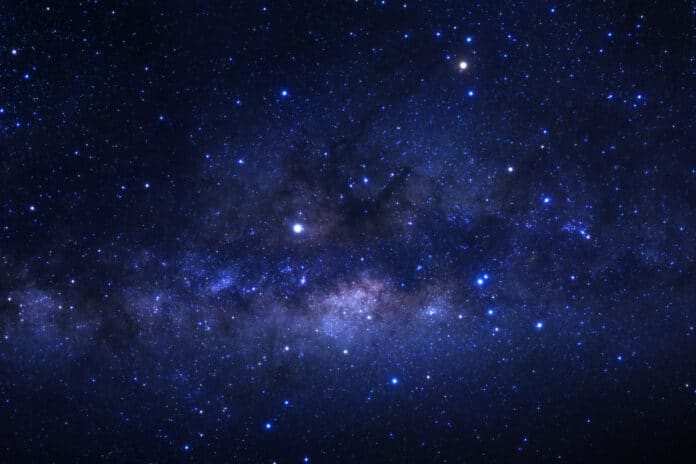Using Atacama Large Millimeter/submillimeter Array (ALMA) high-resolution observations, a new study by the SISSA Astrophysics team reports about water emission lines in a strongly lensed galaxy HATLASJ113526.2-01460. The galaxy is also known as the J1135 galaxy.
The team identified the distribution of water vapor in this celestial body, which is 12 billion light years away and formed when the Universe was a “teenager,” 1.8 billion years after the Big Bang.
The team reconstructed maps of water emission and line profiles from the lensing. With unprecedented resolution, this water map is the first ever to be obtained for such a remote galaxy.
The authors explained, “The map can help us to understand the physical processes taking place within J1135 and shed light on the dynamics, still partially unclear, surrounding the formation of stars, black holes, and galaxies themselves.”
Francesca Perrotta, lead author of the study conducted by the Galaxy Observational and Theoretical Astrophysics (GOThA) team at SISSA, said, “Water can be found not only on Earth but anywhere in space, in different states. For example, in the form of ice, Water can be found in so-called molecular clouds, dense regions of dust and gas in which stars are born.”
“Water acts like a cloak, covering the surface of interstellar dust grains, which form the building blocks of these molecular clouds and the principal catalysts of molecule formation in space.”
“At times, something breaks the stillness and coldness of these molecular clouds: the birth of a star, which releases heat, or a black hole, which begins to aggregate matter, emitting energy. Radiation from stars and other sources can heat the icy Water, sublimating it into the gaseous phase. As the water vapor cools, it emits light in the infrared part of the spectrum. Astrophysicists can then observe this water vapor emission to map the regions of the galaxy where energy is produced, giving us unprecedented insights into how galaxies are formed.”
The mappings of other molecules, such as carbon monoxide (CO), also utilized in investigating these events, can then be integrated with this information.
Dr Perrotta explains that this study is valuable partly because it also extends our knowledge in a critical area: “It isn’t yet clear how galaxies are formed. There are at least two possible scenarios, not necessarily alternative: one sees the aggregation of small galaxies to create larger ones, and the other sees the formation of stars in situ. Studies like ours help us to understand what is happening, specifically in that galaxy, but we can also potentially deduce more generic information from that.”
Journal Reference:
- Francesca Perrotta, Marika Giulietti et al. The Way of Water: ALMA Resolves H2O Emission Lines in a Strongly Lensed Dusty Star-forming Galaxy at z ∼ 3.1. The Astrophysical Journal. DOI 10.3847/1538-4357/accd72
